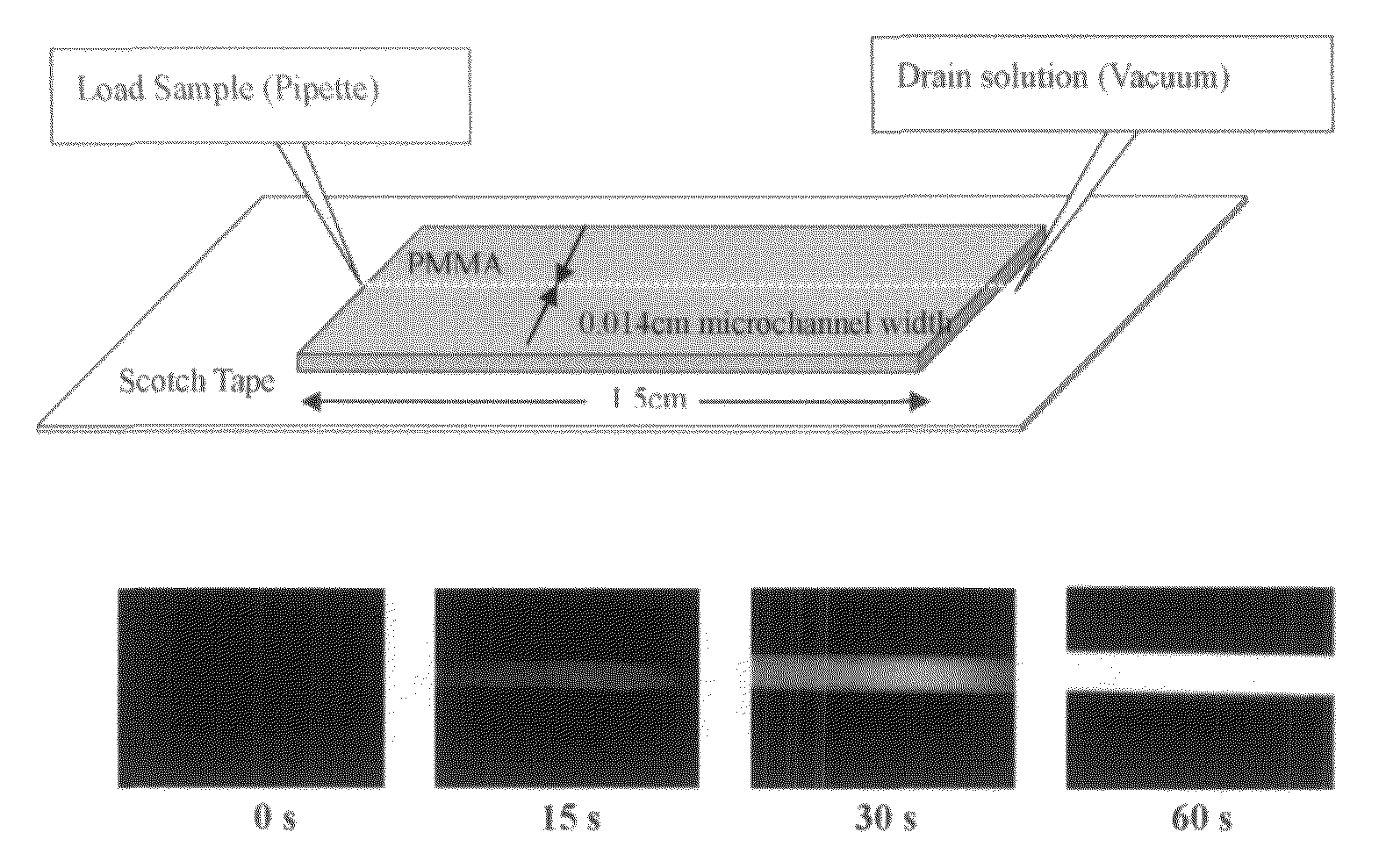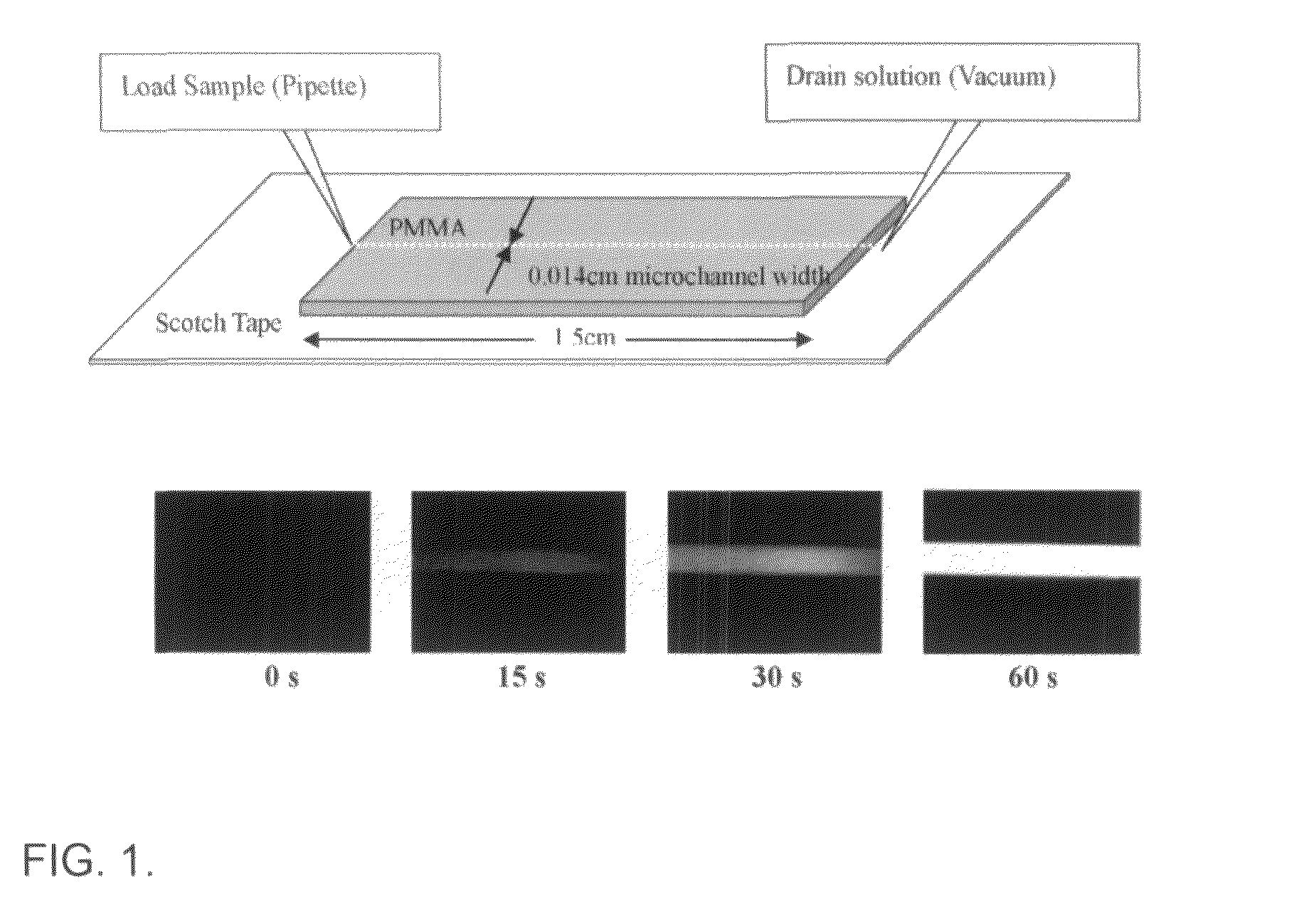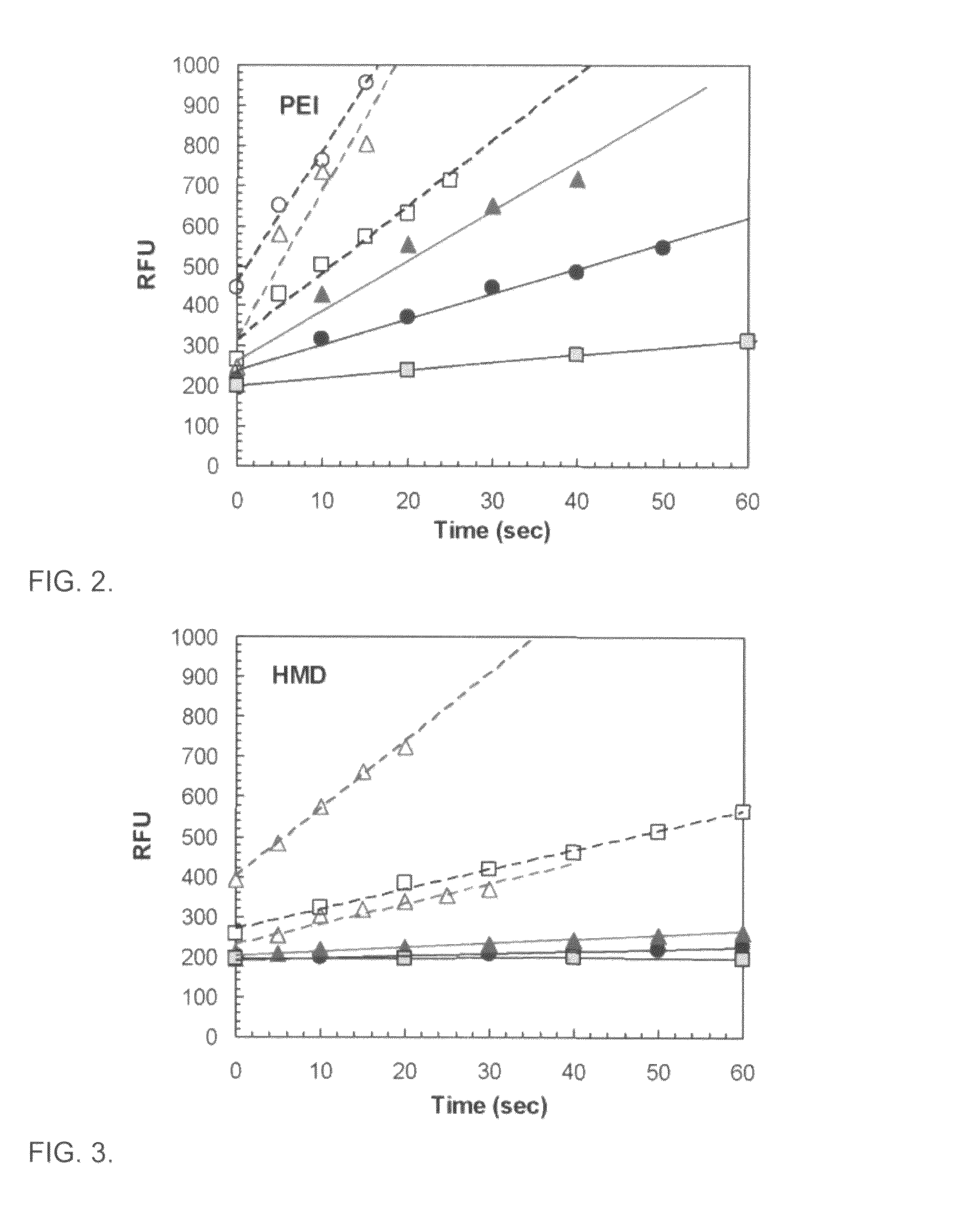Aminated materials for assays
a technology of assays and amines, applied in the field of assays using amines, can solve the problems of large errors, difficult to control the surface properties of assays, and usually takes several hours or longer to complete one assay, and achieve the effect of high surface amine density
- Summary
- Abstract
- Description
- Claims
- Application Information
AI Technical Summary
Benefits of technology
Problems solved by technology
Method used
Image
Examples
example 1
[0085]Fabrication of PMMA Microchannel
[0086]A PMMA mold for microchannels (140 μm wide, 125 μm deep, and 1.5 cm long) was fabricated using a computer numerical controlled (CNC) machine. Polydimethylsiloxane (PDMS) was prepared from Sylgard 184 silicon elastomer base and curing agent (Dow Corning corporation, Midland, Mich.) at a 10:1 (w / w) ratio. After thorough mixing and degassing under vacuum for 30 min, the PDMS polymer was cast over the PMMA mold and cured in an oven at 70° C. for 1.5 to 2 hours. The PDMS daughter mold was then used to produce PMMA microchannels through a microembossing process. A schematic of the microfluidic ELISA device is shown in FIG. 1 along with fluorescence images of the microchannel at different times after the initiation of the enzyme reaction in ELISA.
[0087]Modification of PMMA Microchannels
[0088]To functionalize the PMMA surface, the microchannels were treated with four different amine-bearing chemicals:
example 2
[0149]Fabrication of PMMA Microchannel
[0150]A PMMA mold for microchannels (140 μm wide, 125 μm deep, and 1.5 cm long) was fabricated as described in Example 1.
[0151]Modified PMMA Microchannels
[0152]The PMMA microchannels were aminated with PEI (MW 75,000, Sigma Chemical Co., MO) to enhance antibody binding. A partial factorial screening design based on the JMP 5.1 software (SAS Institute Inc. Cary, N.C.) was used to investigate four independent variables:
[0153]1. PEI concentration (0.2% or 1%);
[0154]2. PEI solution pH (7.0 or 11.5);
[0155]3. incubation time (20 min or 1 hour); and
[0156]4. incubation temperature (25° C. or 50° C.).
[0157]Sodium hydroxide and hydrochloride were used to adjust the pH value of the PEI solution. PMMA plates were directly immersed in the PEI solution (0.2 or 1.0%; pH 7.0 or 11.5) at a constant temperature (25 or 50° C.) for 20 or 60 min. The aminated PMMA plates were then placed in glutaraldehyde (1% w / v) at room temperature for 30 min. The PMMA surface was...
PUM
 Login to View More
Login to View More Abstract
Description
Claims
Application Information
 Login to View More
Login to View More - R&D
- Intellectual Property
- Life Sciences
- Materials
- Tech Scout
- Unparalleled Data Quality
- Higher Quality Content
- 60% Fewer Hallucinations
Browse by: Latest US Patents, China's latest patents, Technical Efficacy Thesaurus, Application Domain, Technology Topic, Popular Technical Reports.
© 2025 PatSnap. All rights reserved.Legal|Privacy policy|Modern Slavery Act Transparency Statement|Sitemap|About US| Contact US: help@patsnap.com



